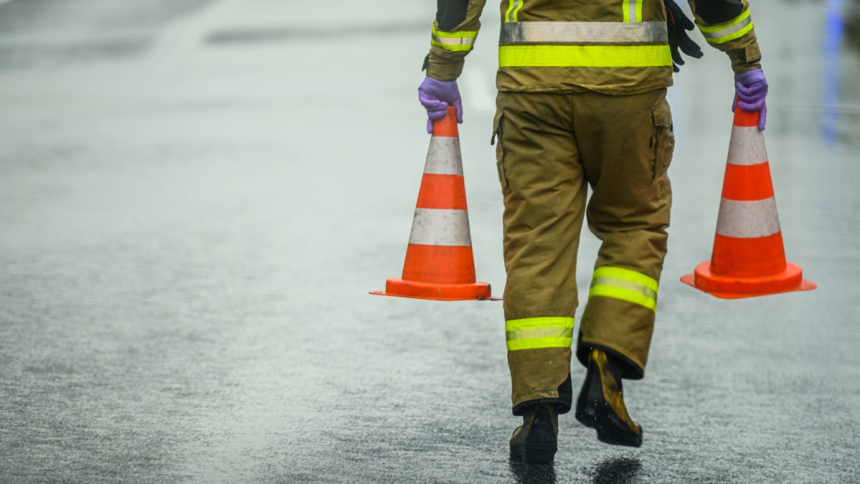Rethinking Road Closures: More Than Just a Detour
Road closures are often seen as a necessary nuisance—something to be tolerated by the public and managed begrudgingly by the project team. But in a city where space is tight and opinions even tighter, effective traffic management becomes a make-or-break element of success.
The best schemes do more than minimise disruption. They use closure periods as opportunities to build goodwill, improve safety, and even deliver unexpected benefits to local communities. This is not about simply blocking off a road. It’s about reimagining the space—and the strategy—so that everyone wins.
Why Traffic Management Matters Beyond the Construction Site
At first glance, traffic management might appear to be a logistical concern: reroute vehicles, install barriers, and keep the project on schedule. But in reality, its scope is much wider. It shapes how residents experience the project. It determines whether local businesses survive the construction period. And it directly impacts the perception of the developer’s professionalism.
This is where Urban Thinking excels. Their traffic project planning strategies are not only informed by regulations and risk assessments, but also by empathy, design thinking, and an awareness of the bigger picture. They consider not just how to move vehicles—but how to move relationships forward with communities and councils alike.
How Urban Thinking Approaches the Challenge
Urban Thinking’s model of traffic management begins with a mindset shift: treat the road closure not as an obstacle to the build, but as an active component of project success.
They approach every closure plan with a deep understanding of local conditions—traffic volumes, public transport links, pedestrian flows, and nearby land uses. From this, they craft a strategy that is highly tailored, legally robust, and, most importantly, sensitive to the needs of those who live, work, and travel in the area.
Designing with Disruption in Mind
Traffic management isn’t something that happens once ground is broken. It must be designed into the project from the earliest feasibility stage. Understanding how the build will interact with surrounding streets enables planners to identify challenges before they become crises.
Staggered Closures
Rather than shut down an entire road for months, phased closures reduce the impact and allow access where it’s needed most. This keeps footfall flowing to local shops and maintains vital connections for emergency services.
Smart Signage and Wayfinding
Clear, intuitive signage—placed well beyond the closure zone—can reduce confusion, prevent congestion, and maintain pedestrian confidence. Wayfinding should serve all users, from cyclists to delivery drivers to parents with prams.
Access Strategies for Key Stakeholders
Healthcare workers, refuse collectors, and school staff all need bespoke access planning. Ignoring these groups risks creating major disruption and undermining trust.
Communication: The Unsung Hero of Traffic Strategy
Even the most efficient detour plan can backfire without communication. Residents need to know what’s happening, when, and why. Businesses need clarity to plan stock deliveries, customer access, and staff rotas. Councils need assurance that the public will be kept on-side.
Successful schemes don’t just notify—they engage. Letters through the door are just the start. Pop-up engagement booths, digital updates, and proactive press strategies all help shift sentiment from frustration to understanding.
When people feel informed, they’re far more likely to be supportive—even when it means a longer walk to work or a slightly delayed commute.
Community-Centric Thinking in Action
Not all disruption is negative—if managed creatively, it can be an opportunity to bring something new to the neighbourhood. Some projects transform closed roads into temporary public spaces during the build phase—hosting pop-up parks, art displays, or community markets.
Others use the moment to highlight local history, spotlight independent businesses, or provide educational material about the construction itself. These initiatives turn a potential pain point into a point of pride, demonstrating that development and community can coexist—often more harmoniously than expected.
Working with Data, Not Assumptions
Traffic plans that rely on guesswork will rarely survive first contact with the public. Instead, the best strategies are informed by real-world data: traffic counts, pedestrian flow analysis, cycle lane use, public transport trends.
Urban Thinking makes use of digital modelling tools to simulate the impact of closures long before they’re implemented. These simulations can test multiple scenarios, allowing teams to choose the least disruptive path forward. They also support better conversations with authorities and communities—where plans can be justified with evidence, not just intention.
Training Teams for Street-Level Success
Even the most well-thought-out traffic management plan can fail if the people executing it aren’t fully equipped. That’s why on-site teams—especially traffic marshals and logistics managers—must be trained not just in compliance, but in customer service and conflict resolution.
It’s about being more than a human barrier. Teams need to provide clear guidance, answer questions calmly, and understand that they represent the face of the entire project. A single helpful conversation can defuse tensions and turn criticism into cooperation.
Reframing Road Closures as Opportunities
What if road closures weren’t just seen as a problem to fix—but a platform to elevate the project? What if the disruption was embraced as a chance to demonstrate care, creativity, and collaboration?
That’s the promise of intelligent traffic management. It allows developers to build more than just buildings—they build relationships, trust, and even legacy. In the heart of the city, where every street matters, every closure becomes a chance to show what kind of future is being built—and who it’s being built for.
Lynn Martelli is an editor at Readability. She received her MFA in Creative Writing from Antioch University and has worked as an editor for over 10 years. Lynn has edited a wide variety of books, including fiction, non-fiction, memoirs, and more. In her free time, Lynn enjoys reading, writing, and spending time with her family and friends.















